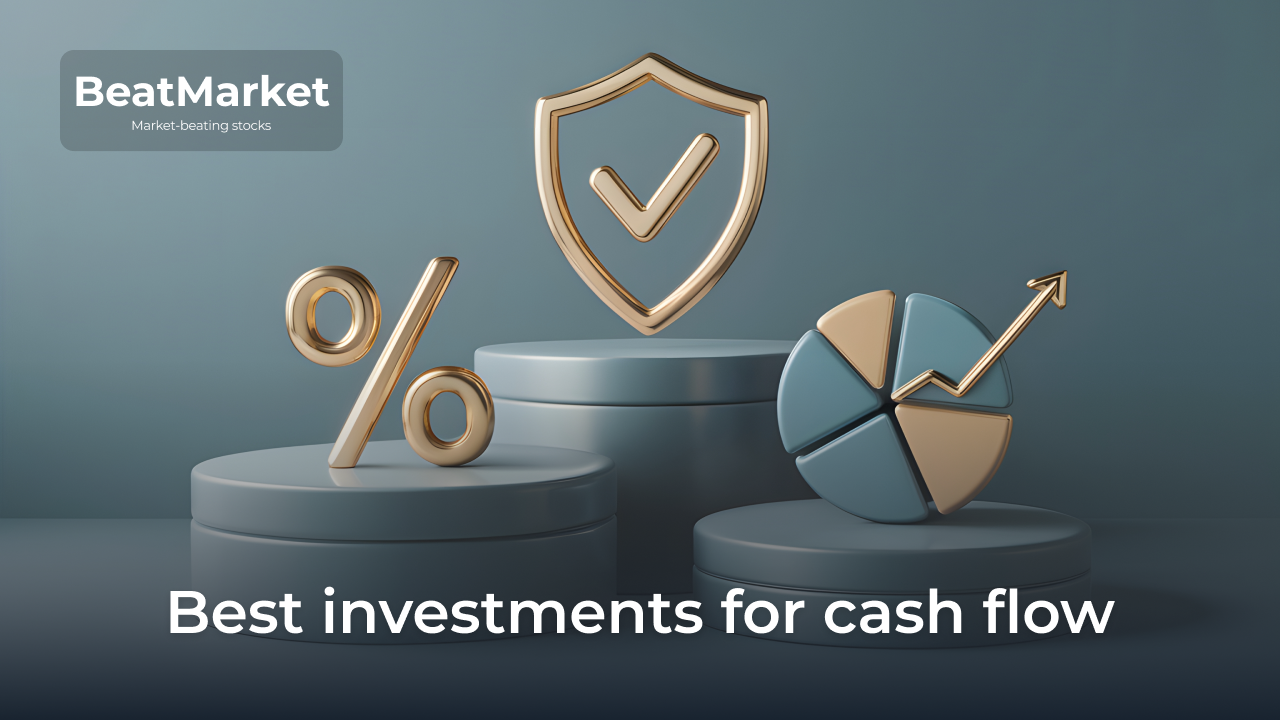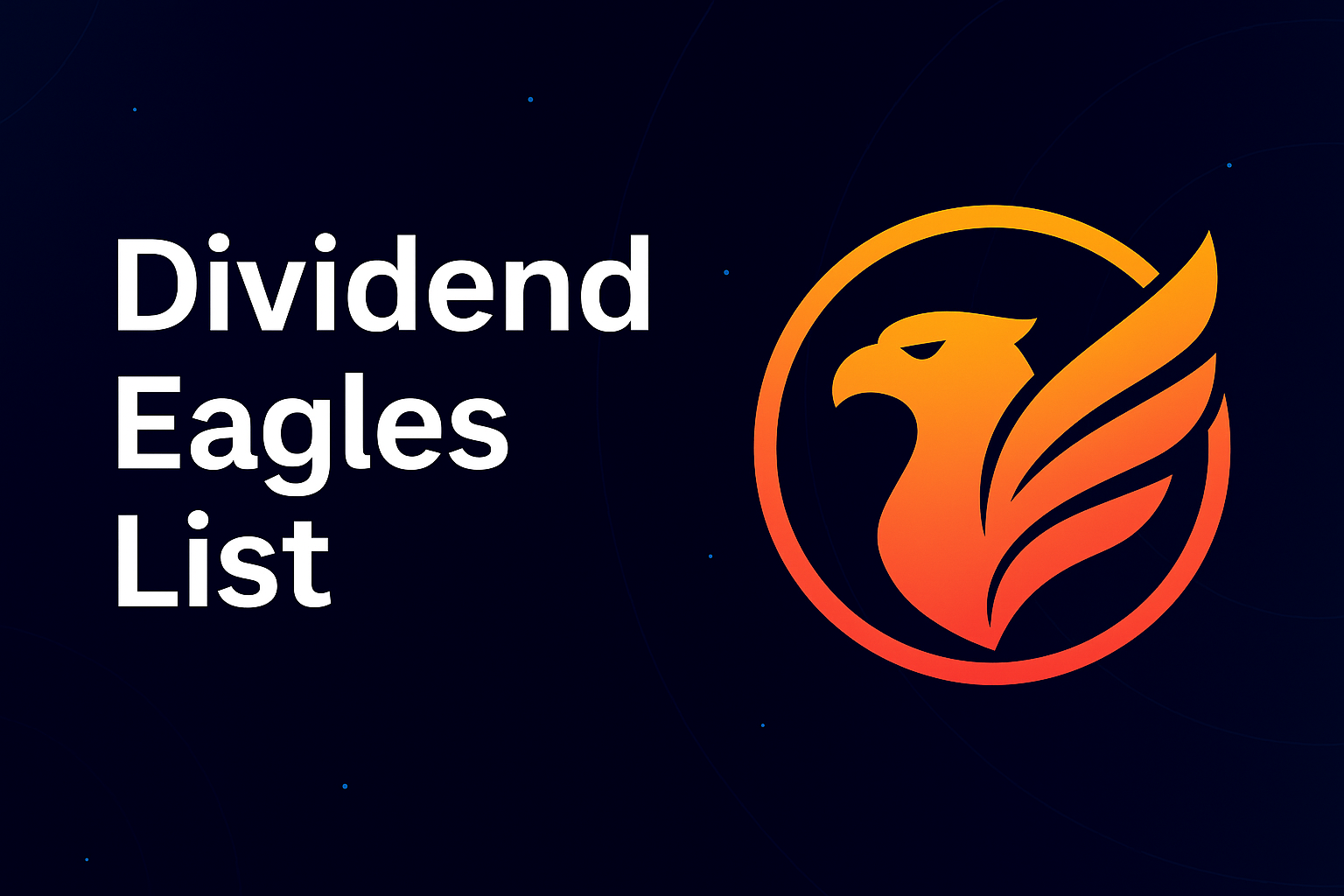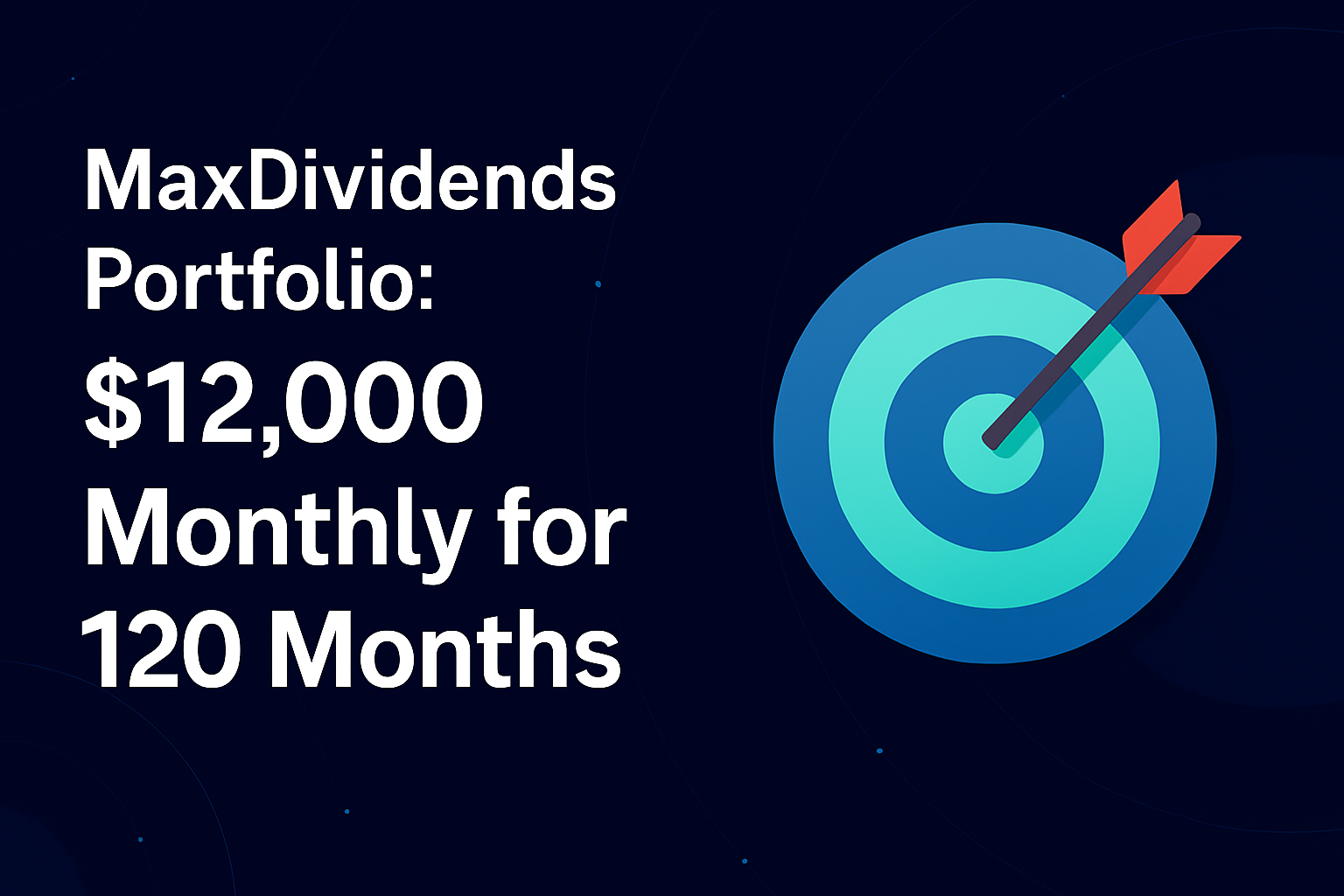Being financially independent is based on avoiding attachment to a single source of active income. Many investors choose capital that generates stable profits.
From the point of view of an independent expert, this article will cover the best passive and semi-passive cash flow generating investments. Some of them can be used as the basis of a portfolio, while others only for diversification. All examples of companies and investment platforms are given for the purpose of informing and cannot be considered as individual recommendations.
Table of Contents
Key Takeaways
Key notes on the assets discussed below are summarized in the table below.
| Name | Type of investor | Main advantage | Main disadvantage |
| Dividend stocks | Moderate | Rising income | Risk of cessation of payments |
| Bank accounts, annuities, bonds | Conservative | Guaranteed profit | Low profitability |
| Real estate | Conservative | Physical asset ownership | Additional costs |
| REITs | Conservative | High income | Commissions |
| Crowdfunding, royalties, P2P lending, alternative investments, small business | Aggressive | High income | High risks |
| Mutual funds, ETFs | From conservative to aggressive | Easy portfolio diversification | Commissions |
| Retirement accounts | Conservative, moderate | Tax advantages | Limitations on withdrawals |
| Affiliate marketing | Conservative | No start-up capital needed | Necessity of having your own blog |
| Selling options | Moderate | Fixed income | Option exercise risk |
Dividend stocks
These are stocks of companies that consistently pay dividends, i.e. distribute part of their profits to shareholders.
The main investment objective in buying dividend stocks is to create cash flow. It will gradually increase due to the growth of dividends.
The components of the S&P 500 Dividend Aristocrats Index are considered the best dividend paying stocks. Its annual dividend yield is close to 2% (as on October 15, 2024). Individual companies yield 4-5%. The highest-paying Dividend Aristocrat is Franklin Resources (BEN). Yield is 6.12%.
The asset entry threshold is 1 stock. But to create a diversified portfolio you will need at least 5 companies. Therefore, the cheapest and most effective option is to use the S&P 500 Dividend Aristocrats ETF (ticker NOBL). The current price is $107.16 (as on October 15, 2024).
The main drawback is that dividend payments are non-guaranteed. Any company can opt out of them.
But the BeatMarket team has cooked up and is ready to launch a new service – MaxDividends, which will help investors build a dividend portfolio for a steady passive income stream.
The BeatMarket crew also runs a blog on Substack, where they break down how it works and how you can secure yourself a solid passive income over time.
Time deposits
These are accounts providing for the capital to be deposited for a fixed period of time at a certain rate. During this period of time, the investor cannot use their own money.
Some deposits assume that the interest accrued will be added to the principal one with no regular cash payments. Others allow the earnings to be paid into a separate account. Yields in 2024 can exceed 5 per cent. For example, for October 15, 2024, Nuvision Credit Union gives 5.50% APY for an 8-month term.
Time deposits are proper:
- as part of a conservative strategy;
- for generating income from money that is planned to be spent in the next 1-2 years;
- for an emergency fund.
Some banks set the entry threshold at $500-$1000. Others do not regulate the minimum deposit.
The main advantage of bank term accounts is reliability. The amount up to $250 thousand is insured, and the cash flow is predictable and guaranteed. The main disadvantage is the low yield, which will not allow you to outpace inflation.
Accounts for short-term lending
An investor can earn money by lending money to other people or small companies through special platforms. Such services allow you to receive 15-25% per annum. For example, percent.com gives 17.94% current weighted average APY (as of October 16, 2024).
The capital is distributed among several borrowers to reduce the chances of default. The entry threshold depends on the platform, typically starting at $500. This cash flow investing option is proper for people with a high risk tolerance who want to increase portfolio returns.
The main pros and cons of private lending are summarized in the table below.
| Advantages | Disadvantages |
| High potential profitability | Most platforms are designed for accredited investors |
| Convenience of reinvesting | No guarantee of safety of capital |
| Fully passive income | Asset illiquidity |
Real estate
Investment real estate is houses, office space, garages and other properties that the owner rents out for a fee. This is the traditional and most popular of the cash flow investments.
This option is proper for conservative investors who want to profit both from renting out the property and from the increase in its value. Rental income depends on the status of the property (residential or commercial real estate) and other factors. Taking into account the costs, it can be as little as 1-2% of the value of the object.
Advantages and disadvantages of real estate investments are shown in the table below.
| Advantages | Disadvantages |
| Opportunity to generate passive income while property prices appreciation at the same time | Risk of physical damage to investment property |
| No counterparty risk | Probability of losses due to absence of tenants |
| Gradual growth of income due to increase in rents | Expenses for taxes, repairs |
| High entry threshold (from a few thousand dollars) |
Real Estate Investment Trusts (REITs)
This is a type of collective investment that allows you to make money on real estate with no direct property ownership. An investor can buy stocks of individual REITs on the stock exchange just like stocks of regular companies, or invest in ETFs on REITs.
The outstanding feature of real estate investing through REITs is the high dividend yield. Some funds yield more than 10% annually. For example, Blackstone Mortgage (BXMT) has a dividend yield of 10.25% ($1.88 per share, as of October 16, 2024).
Key Benefits of REITs :
- low entry threshold (there are REITs with stocks as low as $10-$15);
- no property maintenance costs;
- ease of diversification;
- fully passive income.
The disadvantage is the commission retained by the management company. In addition, there are risks of reduction of dividends, stock prices, etc.
Farmland Investing
Farmland is a type of real estate investment. You can invest in them through REITs such as Gladstone Land (LAND) and Farmland Partners (FPI).
The advantages of such investments are:
- portfolio diversification;
- inflation protection;
- low entry threshold.
Farmland Partners stock is worth just $10.84 per stock, and the dividend yield is at 2.21% (as of October 16, 2024).
Another option for making money from farmland is crowdfunding platforms like FarmTogether. The main disadvantage is a high entry threshold and only available to accredited investors. The advantage is higher returns.
The main risk associated with investing in farmland is losses due to crop failure and natural disasters.
Real estate crowdfunding
It is another investment opportunity to make money from real estate with minimal initial capital. Crowdfunding platforms, such as Fundrise, allow you to start with as little as $10. A person gets a stake in a diversified set of properties picked by the company’s experts.
The main difference from REITs is the lack of strict legislative regulation. Therefore, many platforms will be available only to accredited investors.
This way of real estate investing has a higher potential return. This is considered a major advantage. For example, Fundrise in 2022 brought clients a profit of 1.5%, while the FTSE NAREIT All REITs index fell by 25.1%. But according to the results of the 2023 and first quarter of 2024, the advantage is on the side of the FTSE NAREIT All REITs index:
- 11.48% vs -7.45% in 2023;
- 10.56% vs 1.83% in 1Q 2024.
After the second quarter of 2024, the situation shifted once again. The FTSE NAREIT All REITs index saw a loss of 2.20%, while the average return for Fundrise clients was 3.47%.
The main disadvantage is zero liquidity. It is not possible to return investments early or sell them to another investor.
Fixed-income securities (Bonds)
These are debt obligations of the government or companies. There are many types of these securities. The most popular one is bonds with coupon yield. Their owners receive payments from the issuer every six months. The coupon rate can be either constant or variable.
Depending on the type, bonds are proper for many investment strategies:
- generation of a consistent cash flow;
- protection against inflation;
- reducing portfolio volatility, etc.
The main drawback is the low yield. On October 15, 2024, 10-year US bonds yield was 4.035% per annum.
The reliability of this type of cash-flow investment depends on the issuer’s credit rating. The lower it is, the higher the investor’s return. But there is also a higher risk of default and loss of the initial money.
Most bonds are sold in lots of about $1,000. Investors with small capital can replace individual securities with investments in bond ETFs.
Mutual funds
These are financial instruments that pool the assets of shareholders to invest in securities. There are a huge number of varieties of mutual funds, so any investment strategy can be realized with their help.
A mutual fund can be actively managed, i.e. the managers themselves select securities based on a set strategy. Another option is passive management (copying a stock index).
The advantage of mutual funds is that they provide an opportunity:
- make money on the stock market with little knowledge;
- easily diversify the portfolio with a small capital;
- fully entrust management to a specialist (target-date funds even save the investor from the need for rebalancing).
Traditionally, high commissions and entry thresholds are considered disadvantages of mutual funds. But many management companies have already abandoned such restrictions.
Mutual fund examples include Fidelity 500 Index Fund and Vanguard Total Bond Market Index Fund. Average 3 Yrs Annual Returns of Fidelity 500 Index Fund is 11.90% (as of 09/30/2024).
Accounts for retirement savings
These are not income producing assets, but a type of brokerage account. Depending on the programme chosen, a person can use mutual funds, bonds, stocks, etc. in a retirement account.
The advantage of retirement accounts is that they provide tax benefits. This increases the net investment income. Traditional retirement plans allow you to pay no tax on the amount contributed to the account. And tax is only withheld on investment income when the money is withdrawn. Roth 401(k) and Roth IRAs are completely tax-free on the investor’s earnings.
The main disadvantage is the inability to immediately withdraw dividends and coupons received. Retirement programmes are not proper for people who are looking for cash flow investments to live on passive income now.
Exchange-Traded Funds (ETFs)
This type of collective investment resembles mutual funds in many ways, but has a number of advantages over them:
- low commissions and entry threshold;
- greater liquidity;
- high transparency (information on net assets is updated much more frequently);
- flexible pricing.
ETF stocks are traded on the stock exchange like stocks of individual companies. Their price changes every second. Mutual funds update the stock price once a day.
Almost all ETFs are passive funds that copy an index from the stock exchange. Which investment strategy a fund is suitable for depends on the underlying index.
The asset entry threshold is one stock. There are ETFs costing $10, the price of others can reach hundreds of dollars.
The main disadvantage of ETFs compared to mutual funds is the smaller number of strategies available. When an investor works with ETFs, they must rebalance the portfolio themselves.
Savings accounts with high interest rates
High yield savings accounts and money market accounts are types of bank deposits. The difference from time deposits is that the owner is free to use their money with no interest loss and no early withdrawal penalties.
Money market accounts typically return 0.3-0.5 per cent less than time deposits. Best APY on October 15, 2024 is 5.30% (LendingClub Bank). These investments allow you to earn a monthly income and retain the ability to make deposits and withdrawals. They can be used to accumulate small amounts, place a safety cushion, etc.
The main disadvantage is low yield. In addition, banks can change the rate at any time. Advantages:
- free access to money;
- guaranteed safety of the deposit;
- low entry threshold (in some banks from $0).
Royalties
It is a payment for the right to use someone else’s property. For an investor, royalty purchases are a way to diversify their portfolio and provide themselves with long-term passive cash flow.
Royalty income rights can be purchased by buying stocks in royalty trusts or by bidding on royalty auction exchanges. There are 2 main types of royalties:
- intellectual property (music, patents);
- real assets (mining).
The main advantage – investor’s income is independent of the situation on the stock market and fluctuations in interest rates. The main disadvantage is that cash flow statements can be unpredictable and fluctuate widely.
Among the examples of high-yield royalty trusts are San Juan Basin Royalty Trust (SJT), Sabine Royalty Trust (SBR).
Mutual funds focused on bonds
Bond index funds are a type of mutual fund with net assets consisting only of debt securities. They provide the investor with:
- regular cash flow;
- low stock price volatility;
- lower threshold of entry into the debt market.
Bond funds are proper for conservative individuals seeking a regular cash flow. The main disadvantage is the same as with other investments with minimal risks. It is a low yield that barely covers inflation.
Some examples of bond mutual funds are PIMCO Long-Term Credit Bond Fund, American Funds Bond Fund of America. Dividend yield on October 15, 2024 was about 4.05%.
Financial products providing regular payments (Annuities)
An annuity is a contract between an investor and an insurance company whereby the former pays an amount agreed upon in a lump sum or series of installments in exchange for regular payments.
The most popular type is the annuity with deferred income. Such an asset is proper for the formation of retirement capital. Advantages and disadvantages of this financial product are shown in the table below.
| Advantages | Disadvantages |
| Guaranteed income | High commissions and fees |
| Flexible terms and conditions | Tax penalties for early withdrawal of money |
| Cash management assistance (for variable annuities) | Penalties from the insurance company for early cancellation of the contract |
Affiliate marketing (Partnered promotion online)
This way of earning money is not related to passive investments, but it can generate a stable income. It is best suited for popular bloggers who want to profit from their audience.
Affiliate marketing programmes are offered by many leading retailers. An example of resources for finding options is Shopify.
The benefits of this way to increase your free cash flow:
- simplicity;
- low risks;
- rapid scalability;
- zero entry threshold.
The downside is that you need to have a popular blog or good skills in ad targeting to make a high income.
Invest in Small Businesses
Investing in small non-public companies can be done through special platforms. Examples are Mainvest, Honeycomb Credit. Such investments should be considered as a way for people with a high risk tolerance to diversify their portfolio. Their advantages:
- yield of 10%-25% per annum;
- low entry threshold;
- pre-selection of companies by platform managers.
The disadvantage is high risks of bankruptcy of the selected companies. In addition, such investments are absolutely illiquid.
Investment in small businesses can be in the form of loans or equity participation. The first option is characterized by greater reliability, the second one by a higher potential profitability.
Writing covered calls (Trading Options)
The sale of covered call options generates a guaranteed return in the form of a premium paid by the buyer of these contracts. The word covered means that the stock that is the underlying asset of the option is in the seller’s portfolio.
This strategy is used to maximize investment income with moderate risks. Call options are contracts that give their buyer the right to buy stocks at a certain price. When the market value of that stock is lower than that specified in the option by the appointed date, the person will simply give up the right to make the trade.
The main risk is that the price of the underlying asset will rise and the buyer will exercise their call option. That is, the investor who wants to make money will have to sell their stock cheaper than the market price.
Alternative investments
Traditionally, alternative assets include precious metals, art and other valuables that do not generate cash flow.
But modern technology has changed this perception. Numerous online platforms offer not only to earn on alternative assets, but also to receive payments according to a schedule. An example is Yieldstreet. This investment service claims returns of 7%-15% per annum. The minimum amount is $2,500.
The disadvantages are the same as when using any similar services:
- zero liquidity;
- probability of loss of initial capital;
- restrictions for individuals not authorized as accredited investors.
Summary
Above are 19 popular cash flow generating investments, but this list is by no means exhaustive. A person who wants their portfolio to be able to consistently generate income needs to put a strong emphasis on diversification and finding assets with low correlation. In 2024, the hottest trend in investing is moving away from a rigid attachment to stocks and bonds.
FAQ
What investments generate cash flow?
Owners of bonds and dividend stocks can receive regular cash distributions. Many ETFs and mutual funds also bring passive income. You can also earn money on real assets, such as renting out real estate or a car.
How to invest $10k for passive income?
The safest option is to build a diversified portfolio of dividend stocks, treasuries and bonds of major U.S. companies, as well as REITs.
Is cash flow your profit?
Yes, the positive cash flow received by an investor is actually their profit that needs to be taxed on. The rate depends on the person’s financial situation and the type of asset.
What Are the Most Profitable Assets?
REITs’ stocks, crowdfunding platforms and peer-to-peer lending services generate the highest passive income.
You Might Also Like
- What Makes a Dividend Qualified? IRS Rules Explained
- Understanding Forward Dividend Yield: The Complete Guide
- High-Yield Dividend Aristocrats: Top Stocks for Consistent Income
- APY vs Dividend Rate: Which Matters More for Your Returns?





